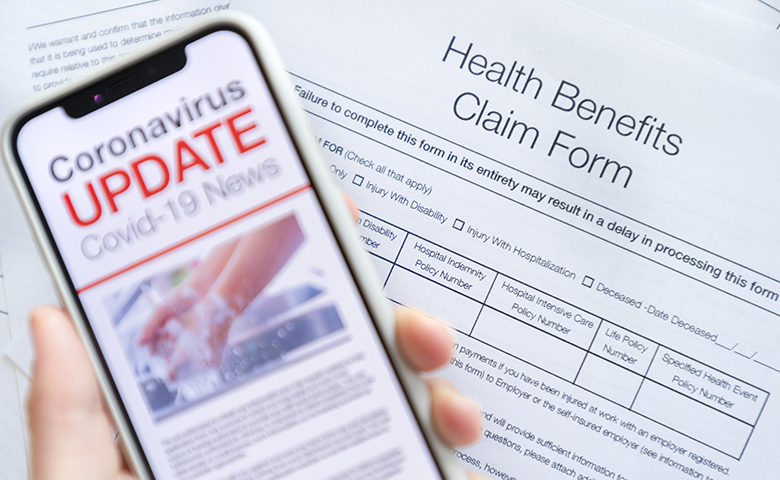When it comes to rating the safety of your company, a lot of people rely on lagging indicator data like total recordable incident rates (TRIR) even when leading indicators are used. This tracks OSHA recordable injuries and illnesses—leaving companies with a list of what not to do in the future.
TRIR downward trend
Companies have collectively made great strides over the years creating a downward trend when it comes to TRIR. According to the NSC, 2019 marked the third straight year that the TRIR did not change. It’s too soon to tell what the numbers are for 2020, but one significant change to business overall was the recent pandemic. And this change has sparked a fear that the TRIR downward trend will be reversed. Or, in the case of specific companies who arrived at low-TRI rates years ago, has added to their fear of regression or interrupting their efforts to maintain zero injuries.
OSHA surprised a lot of people when they announced that COVID-19 can be a recordable illness if a worker is infected while performing their duties—especially because the flu has never been considered a recordable. But even with this shocking revelation, the spike in OSHA’s COVID-19 outreach activities and the fact that it vaulted into the top 3 causes of death this year, it didn’t change the reactive nature in which companies prioritize their focus—and thoughts about could-be recordables aren’t strong enough to take precedence over those competing priorities.
Understandably, COVID-19 still has many companies reacting to the unexpected problems that have impacted their businesses globally. The fear of the downward TRIR trend reversing is not unfounded. COVID-distraction is a real threat to safety—while the focus has been placed on responding to COVID-issues, proactive measures like hazard identification, near-miss reporting and safety observations struggle for attention.
Zero harm
Then there are the companies that adopted the Zero Harm culture. For those that are unfamiliar with the concept, it’s exactly as it sounds. The goal of zero harm is to operate a workplace that has implemented safe work systems, eliminating the risk of injury to workers. But effectively maintaining a Zero Harm culture is not as simple as it sounds. Workers in a Zero Harm culture with a history of low-TRI rates will inevitably become complacent to the risks. Their fear of getting hurt diminishes due to increasing protective measures and lower frequency of incidents elevating their fear of missing target zero due to cultural pressures to succeed—which can hide the very things needed to reset complacency and provide further improvement opportunities.
Even the most thorough safety management system often misses the mark when it comes to keeping workers safe—especially considering off-the-job injuries overshadow workplace harm 10:1. The best way to achieve injury reductions is not based solely on the hierarchy of controls. The one element that is missing among ppe, elimination, substitution, engineering and administrative controls is human factors. Controls to manage routine tasks can get companies to a low TRIR but if human factors are left unmanaged, unknown risks inevitably arise from procedural deviations, non-routine actions or a seemingly simple error. And this is something to be fearful of.
COVID-distraction
This isn’t about blaming workers or scaring them into compliance, it’s about understanding and helping them. If more emphasis went into training workers on the human element of safety, fewer incidents would occur. Since distraction—in this instance, COVID-distraction—is the underlying cause of the incidents that lead to injury, safety managers need to learn how to focus on distraction to improve safety outcomes. A human factors training focus can allow workers to learn how to trigger on their physical and mental states like rushing, frustration or fatigue that have been recognized as precursors to serious injuries and fatalities. It will also open the discussion to working on creating good habits that counterbalance the never-ending drift into complacency and how the same habits protect employees and their family members outside of work.
Managing human factors and fear offers a curious causality dilemma. People can use a bit of fear to offset complacency but fear of things like COVID can cause stress which can increase the risk from distractions. Teaching people how to manage complacency with fear provides comfort for people knowing they are less likely to contract COVID by having these safety skills and lowering their complacency. But it often takes a scary incident for companies to invest in human factors training. Fear of COVID negatively affecting TRIR numbers positively affects those people fearful of protecting their low TRI rate towards the action of addressing human factors with their staff. Companies don’t need to be afraid of increasing their TRI due to COVID if they focus on managing human factors as their next step towards zero harm.
Safety leaders can take it one step further when creating dialogue about human and organizational performance by introducing a human factors framework to set the playbook that allows the rest of the safety management system to run smoothly. Once everything is in place and the right training has been conducted, COVID-distraction and other challenges will shift from negative to positive impacts on the safety, performance, quality and culture of the company. And fear will turn to joy when you pass that zero harm goal at work and begin your new journey towards zero harm for your workers 24/7.

